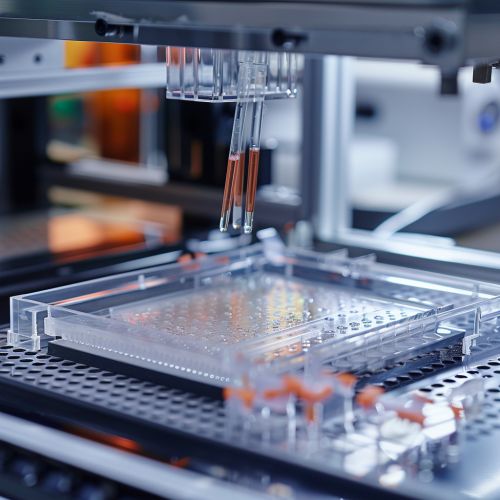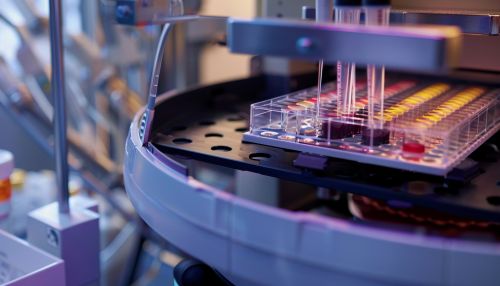Gel electrophoresis
Introduction
Gel electrophoresis is a method used in biochemistry, molecular biology, genetics, and forensic science to separate a mixed population of macromolecules based on their size, electrical charge, or other physical properties. The molecules to be separated can be proteins in the form of enzymes or antibodies, or nucleic acids like DNA and RNA.


Principle
The basic principle of gel electrophoresis involves the application of an electric field to move the charged molecules through an obstructive medium, the gel. Molecules will move through the gel at different speeds, allowing them to be separated from each other. This movement is driven by the electric field, with negatively charged molecules moving towards the positive end of the field and positively charged molecules moving towards the negative end.
Types of Gel Electrophoresis
Agarose Gel Electrophoresis
Agarose gel electrophoresis is commonly used for the separation of DNA and RNA fragments. The gel is made by dissolving agarose powder in a buffer solution, which is then allowed to cool and solidify into a gel. The DNA or RNA samples are loaded into wells in the gel, and an electric current is applied. The negatively charged DNA or RNA molecules move towards the positive electrode, with smaller fragments moving faster and therefore further than larger fragments.
Polyacrylamide Gel Electrophoresis (PAGE)
Polyacrylamide gel electrophoresis (PAGE) is used for the separation of proteins and small DNA or RNA molecules. The gel is made by polymerizing acrylamide and bis-acrylamide in the presence of a catalyst. The proteins or nucleic acids are loaded into wells in the gel, and an electric current is applied. The molecules move through the gel according to their size and charge, with smaller and more negatively charged molecules moving faster and further.
Sodium Dodecyl Sulfate-Polyacrylamide Gel Electrophoresis (SDS-PAGE)
Sodium dodecyl sulfate-polyacrylamide gel electrophoresis (SDS-PAGE) is a variation of PAGE that is used to separate proteins based on their size alone. The proteins are denatured and coated with the negatively charged detergent SDS, which gives all proteins a uniform charge-to-mass ratio. This means that the separation of proteins in the gel is based solely on their size, with smaller proteins moving faster and further than larger proteins.
Applications
Gel electrophoresis has a wide range of applications in the fields of biochemistry, molecular biology, genetics, and forensic science. It is used to separate and analyze proteins and nucleic acids, to determine the size and charge of these molecules, and to purify them for further analysis or use. It is also used in DNA fingerprinting, where it can help to identify individuals or species based on their unique DNA patterns.
